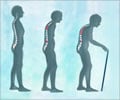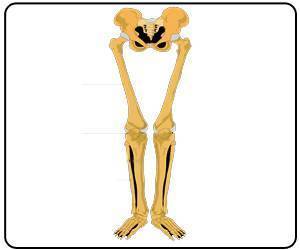In postmenopausal women with severe osteoporosis at higher risk of fractures, administration of romosozumab reduces both the risk of vertebral fractures and the risk of other typical fractures.

‘Romosozumab is a bone-forming monoclonal antibody used in women after menopause for the treatment of severe osteoporosis if there is a high risk of bone fractures.’





More than 540 000 women affected Osteoporosis is a common age-related bone disease. As the bone becomes thinner and more porous, the risk of fracture is increased. Besides fractures of the spine ("vertebral fractures"), the most typical sites of fracture are the hip, the pelvis, the upper arm and the forearm ("non-vertebral fractures"). About 80 per cent of all cases of osteoporosis affect women after menopause. In Germany, more than 540 000 of these women have severe, i.e. advanced osteoporosis at high risk of fracture. The number of affected women in the statutory health insurance is about 475 000.
Randomized controlled trial of two years with over 4000 participants
The IQWiG assessment of the added benefit of romosozumab was based on the ARCH study submitted by the drug manufacturer. 4093 postmenopausal women with severe osteoporosis at high risk of fracture participated in this randomized controlled trial (RCT). Half of the women were treated with romosozumab for 12 months, whereas the other half received alendronic acid. Participants in both study arms then received alendronic acid for at least another 12 months. Primary outcomes of the ARCH study were the occurrence of new vertebral fractures and new clinical fractures.
Overall indication of considerable added benefit
Advertisement
For the outcome "major non-vertebral fracture" (e.g. fractures of the hip, the pelvis, the upper arm or the forearm), the ARCH study also showed an advantage of romosozumab in comparison with alendronic acid: These fractures occurred in 7.1% of the patients in the romosozumab group, and in 9.6% of the patients in the comparator group. The IQWiG project team derived an indication of a minor added benefit from this.
Advertisement
G BA decides on the extent of added benefit
This dossier assessment is part of the early benefit assessment according to the Act on the Reform of the Market for Medicinal Products (AMNOG) supervised by the Federal Joint Committee (G-BA). After publication of the dossier assessment, the G-BA conducts a commenting procedure and makes a decision on the extent of the added benefit.
More English-language information will be available soon (Sections 2.1 to 2.5 of the dossier assessment as well as easily understandable information on informedhealth.org). If you would like to be informed when these documents are available, please send an e-mail to [email protected].
Source-Eurekalert















